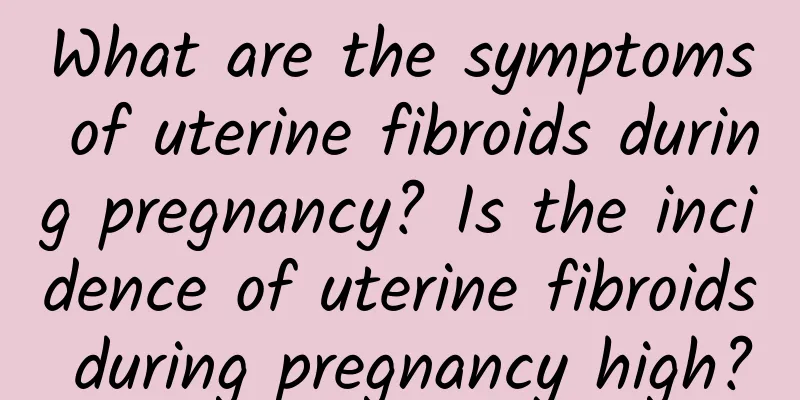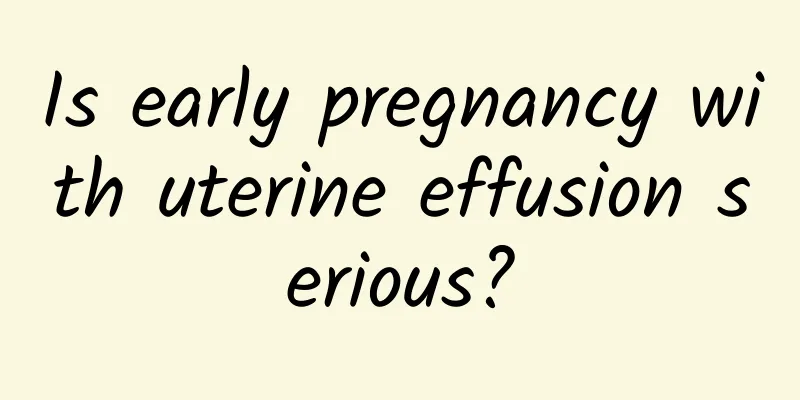What are the symptoms of uterine fibroids during pregnancy? Is the incidence of uterine fibroids during pregnancy high?

|
What are the symptoms of uterine fibroids during pregnancy? We need to master this. Only by mastering the symptoms of uterine fibroids during pregnancy can we provide a basis for active diagnosis and treatment. What are the symptoms of uterine fibroids during pregnancy? Next, let's go into detail. The incidence of uterine fibroids accounts for about 20% to 25% of women of childbearing age, most of which occur between the ages of 30 and 50. Many female fibroid patients are most worried about whether they can get pregnant in the future. In fact, this is related to the location, size and number of the patient's fibroids. For example, cervical fibroids can affect the entry of sperm into the uterine cavity, submucosal fibroids are prone to infect the endometrium, which is not conducive to the implantation of the gestational egg, and huge multiple uterine fibroids are easy to squeeze the interstitial part of the fallopian tube, hindering the passage of sperm. Some scholars believe that uterine fibroids can cause congestion and dilation of the muscle wall or endometrial veins, leading to changes in the uterine environment, which is not conducive to the implantation of the gestational egg; or insufficient blood supply to embryonic development leads to miscarriage, and the miscarriage rate is 2 to 3 times that of non-fibroid pregnant women, usually incomplete miscarriage. Large intramyometrial fibroids or submucosal fibroids can hinder the movement of the fetus in the uterus, resulting in incorrect fetal position, such as horizontal position, hip position, etc., and increase cesarean section. During delivery, because fibroids affect the normal contraction of the uterus, the delivery process can be prolonged; fibroids embedded in the pelvic cavity can block the birth canal and cause dystocia. Fibroids can also affect postpartum uterine contraction, leading to postpartum hemorrhage or poor uterine recovery. If uterine drainage is affected or the surface of the fibroids ulcerates, ulcers are also prone to occur. Pregnancy also has a certain impact on fibroids. After pregnancy, uterine fibroid tissue becomes edematous, smooth muscle cells become hypertrophic, and the uterus is often enlarged. Due to the rapid growth of fibroids during pregnancy, insufficient blood supply leads to degenerative changes, among which red changes are the most common. Patients may experience acute abdominal symptoms such as fever, headache, vomiting, local tenderness, and elevated white blood cells. We must actively grasp the symptoms of uterine fibroids during pregnancy. Of course, in order to ensure everyone's health, after grasping the symptoms of uterine fibroids during pregnancy, we must actively consult relevant experts to obtain active treatment and restore everyone's health. |
<<: What are the symptoms of benign uterine fibroids? How to treat benign uterine fibroids?
Recommend
How much does it cost to cure congenital absence of vagina?
How much is the cost of curing congenital absence...
What are the symptoms of adenomyosis?
What are the symptoms of adenomyosis? Many people...
Will irregular menstruation affect fertility? What medicine is effective for irregular menstruation?
Many female friends suffer from varying degrees o...
What are the early symptoms of ectopic pregnancy?
Ectopic pregnancy is a gynecological acute abdome...
How should you recover after an abortion? There are 7 major dangers of an abortion that you should know
Nowadays, the number of cases of painless abortio...
What methods can effectively treat cervical erosion? 5 measures are most effective in treating cervical erosion
Cervical erosion is a common gynecological diseas...
What fruits can women eat to relieve dysmenorrhea
Dysmenorrhea, almost every woman has experienced ...
What should I do if I have ovarian cysts and my menstruation is rare? Can I take medicine to regulate menstruation?
Many female friends with ovarian cysts will caref...
Is 11MM of pelvic fluid normal? How to judge
In clinical practice, the severity of pelvic effu...
Golden rules of diet and nutrition to prevent threatened abortion
Diet is very important for women. The golden rule...
How to cure pelvic peritonitis
At present, pelvic peritonitis is a disease that ...
Can't resist the craving? 4 tips to overcome food temptation
I don’t know why, but every afternoon around thre...
What to eat after congenital absence of vagina surgery
What is good to eat after surgery for congenital ...
Which hospitals specialize in chocolate cysts?
How to choose the best hospital for chocolate cys...
What are the causes of vulvar leukoplakia?
What are the causes of vulvar leukoplakia? How mu...









